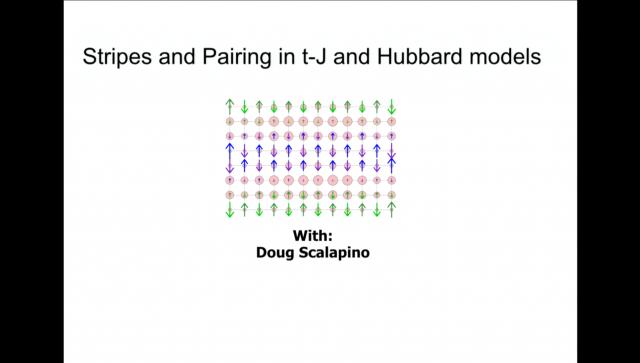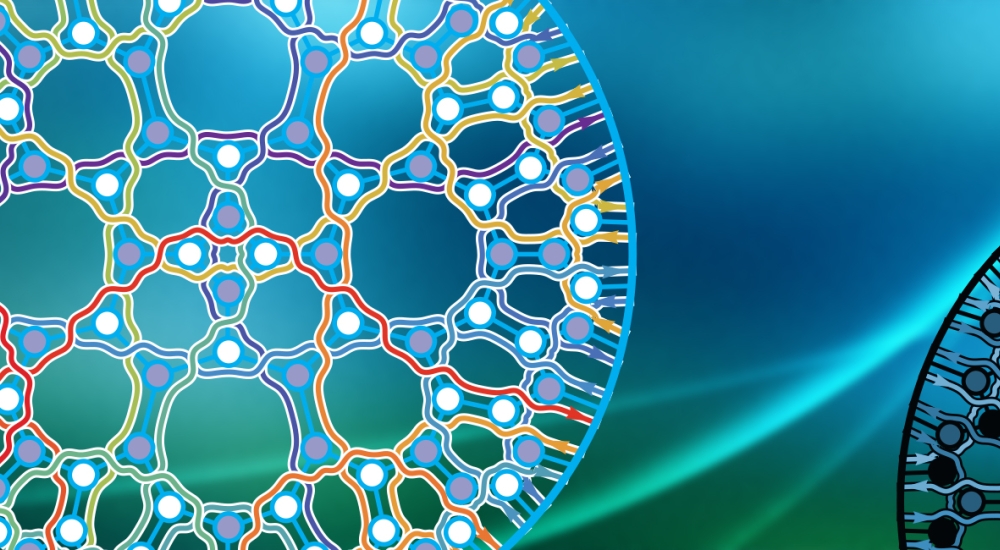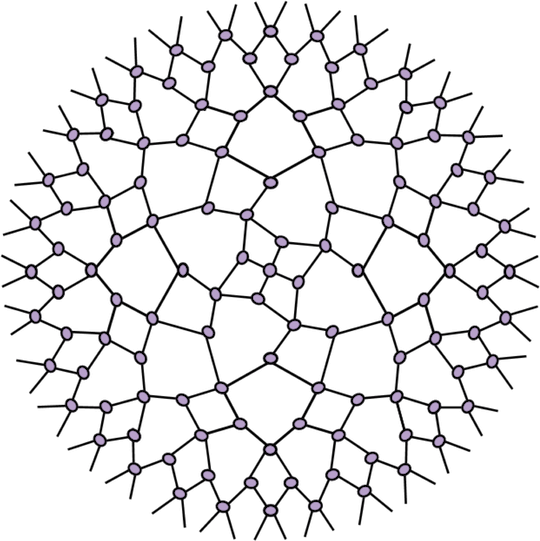From entangled quantum matter to emergent space time
Tensor networks have in recent years emerged as a powerful tool to describe strongly entangled quantum many-body systems. Applications range from the study of collective phenomena in condensed matter to providing a discrete realization of the holographic principle in quantum gravity.
Tensor networks – such as the matrix product state (MPS), the multi-scale entanglement renormalization ansatz (MERA), and the projected entangled-pair states (PEPS) – were originally proposed as novel numerical approaches to study strongly entangled quantum many-body systems, including quantum criticality and topological order. However, the range of applicability of the tensor network formalism has quickly extended well beyond the computational domain.
Tensor networks are currently also investigated as a natural framework to classify exotic phases of quantum matter, as the basis for new non-perturbative formulations of the renormalization group and interacting quantum field theories, as a lattice realization of the AdS/CFT correspondence in quantum gravity, and in machine learning.
Topics that the tensor network initiative at Perimeter Institute explores include:
- Strongly entangled quantum matter: characterization of exotic phases and critical phenomena
- Novel non-perturbative approaches to quantum field theories, including their dynamics
- Tensor network realization of the AdS/CFT correspondence
- New theoretical and computational frameworks for quantum gravity
- Machine learning
Researchers: | ||
Faculty: Research Staff:
| Postdocs:
Students:
| Distinguished Visiting
Visiting Fellows:
|
Advisory committee:
Workshops and Conferences supported by or related to the Tensor Networks Initiative:
- Mathematica Summer School 2015
- Quantum Information in Quantum Gravity II
- It from Qubit Summer School 2016
- Quantum Machine Learning 2016
- Tensor Networks for Quantum Field Theories II
- Glen Evenbly, Guifre Vidal, “Tensor network renormalization yields the multi-scale entanglement renormalization ansatz”, arXiv:1502.05385.
- E.M. Stoudenmire, David J. Clarke, Roger S. K. Mong, and Jason Alicea, "Assembling Fibonacci Anyons From a Z3 Parafermion Lattice Model", arXiv:1501.05305.
- Glen Evenbly, Guifre Vidal, “Tensor Network Renormalization”, arXiv:1412.0732.
- Shuo Yang, Thorsten B. Wahl, Hong-Hao Tu, Norbert Schuch, J. Ignacio Cirac, "Chiral projected entangled-pair state with topological order", Phys. Rev. Lett. 114, 106803 (2015), arXiv:1411.6618.
- Ho N. Phien, Ian P. McCulloch, Guifre Vidal, “Faster convergence of imaginary time evolution tensor network algorithms by recycling the environment”, arXiv:1411.0391.
- E.M. Stoudenmire, Peter Gustainis, Ravi Johal, Stefan Wessel, and Roger G. Melko, "Corner Contributions to the Entanglement Entropy of Strongly-Interacting O(2) Quantum Critical Systems in 2+1 Dimensions," Phys. Rev. B, 90: 235106, arXiv: 1409.6327.
- Bianca Dittrich, Sebastian Mizera, Sebastian Steinhaus, "Decorated tensor network renormalization for lattice gauge theories and spin foam models," arXiv: 1409.2407.
- Lucas O. Wagner, Thomas E. Baker, E.M. Stoudenmire, Kieron Burke, and Steven R. White, "Kohn-Sham Calculations with the Exact Functional", Phys. Rev. B, 90: 045109 (2014), arXiv.org: 1405.0864.
- Ann Kallin, E.M. Stoudenmire, Paul Fendley, Rajiv R.P. Singh, Roger G. Melko, "Corner contribution to the entanglement entropy of an O(3) quantum critical point in 2+1 dimensions", J. Stat. Mech. P06009 (2013), arXiv: 1401.3504.
- B. Bauer, L. Cincio, B. P. Keller, M. Dolfi, G. Vidal, S. Trebst, A. W. W. Ludwig, "Chiral spin liquid and emergent anyons in a Kagome lattice Mott insulator," (accepted in Nature Communications), arXiv: 1401.3017.
- Bianca Dittrich, Mercedes Martin-Benito, Sebastian Steinhaus, "Quantum group spin nets: refinement limit and relation to spin foams," Phys. Rev. D 90, 024058 (2014), arXiv: 1312.0905.
- Glen Evenbly, Guifre Vidal, "Algorithms for entanglement renormalization: boundaries, impurities and interfaces," J Stat Phys, DOI 10.1007/s10955-014-0983-1, arXiv: 1312.0303.
- Bianca Dittrich, Sebastian Steinhaus, "Time evolution as refining, coarse graining and entangling," arXiv: 1311.7565.
- Bianca Dittrich, Wojciech Kaminski, "Topological lattice field theories from intertwiner dynamics," arXiv: 1311.1798.
- Glen Evenbly, Guifre Vidal, "Scaling of entanglement entropy in the (branching) multi-scale entanglement renormalization ansatz," Phys. Rev. B 89, 235113 (2014), arXiv: 1310.8372.
- Bianca Dittrich, Mercedes Martín-Benito, Erik Schnetter, "Coarse graining of spin net models: dynamics of intertwiners," New J. Phys. 15 (2013) 103004, arXiv: 1306.2987.
- Glen Evenbly, Guifre Vidal, "A class of highly entangled many-body states that can be efficiently simulated," Phys. Rev. Lett. 112, 240502 (2014), arXiv: 1210.1895.
- Glen Evenbly and Guifre Vidal, "A real space decoupling transformation for quantum many-body systems," Phys. Rev. Lett. 112, 220502 (2014), arXiv: 1205.0639.
Lectures and talks
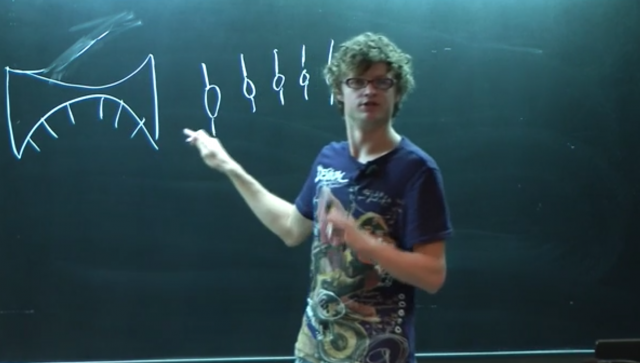
Mathematica, tensor networks, MERA and entanglement
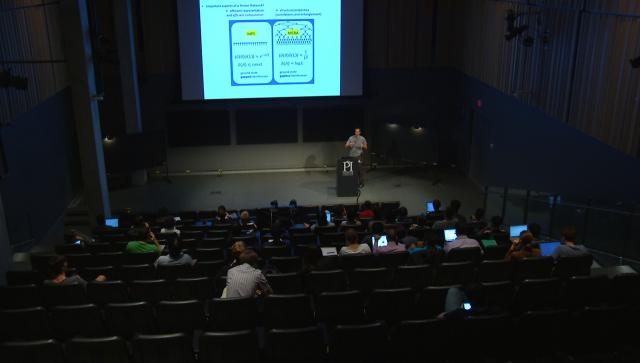
Tensor network renormalization
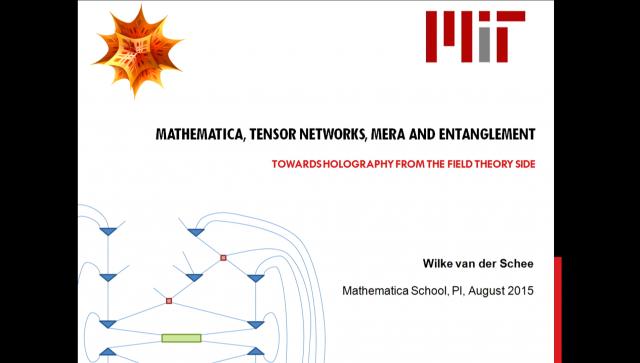
Mathematica, tensor networks, MERA and entanglement
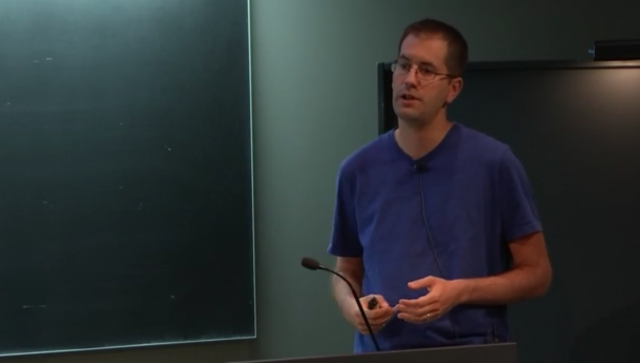
The multi-scale entanglement renormalization ansatz
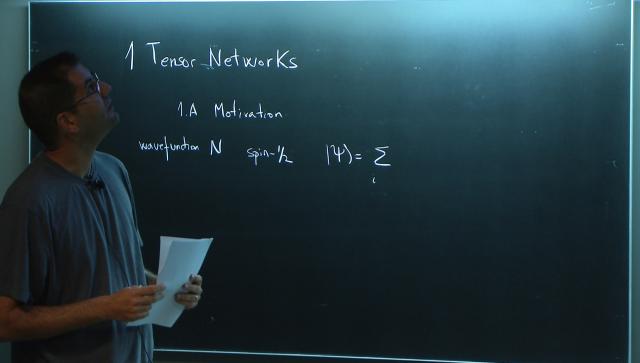
Ground state entanglement and tensor networks
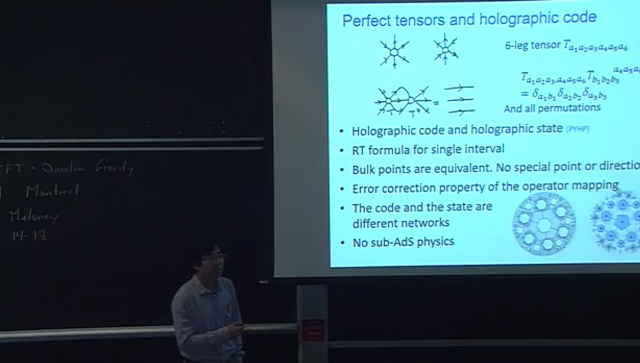
Holographic mapping, quantum error correction code and sub-AdS locality
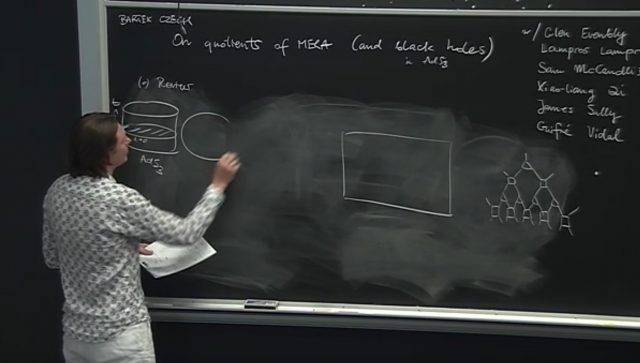
Quotients of MERA
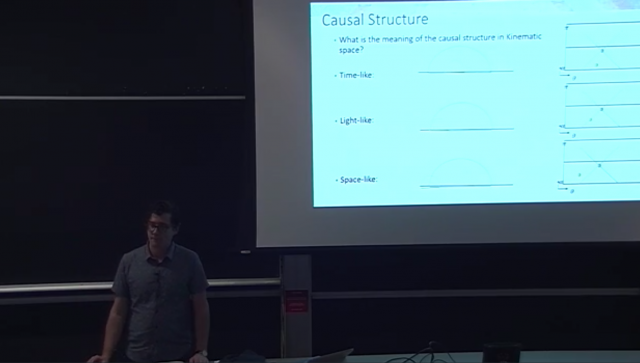
What to Expect in Kinematic Space
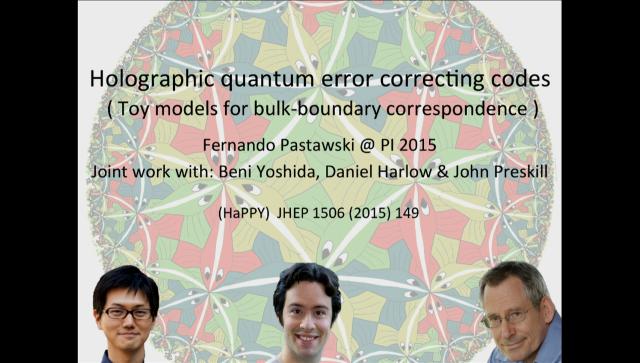
Holographic quantum error-correcting codes: Toy models for the bulk/boundary correspondence
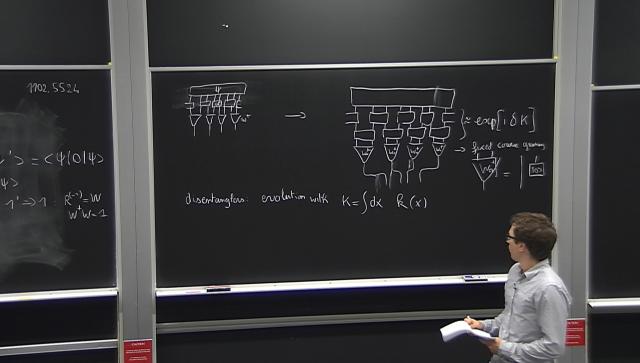
Entanglement renormalization for quantum fields
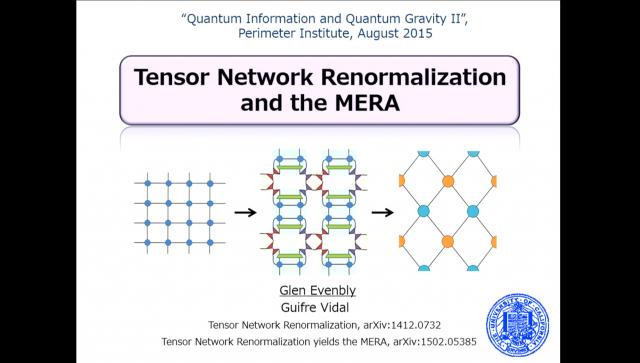
Tensor Network Renormalization and the MERA
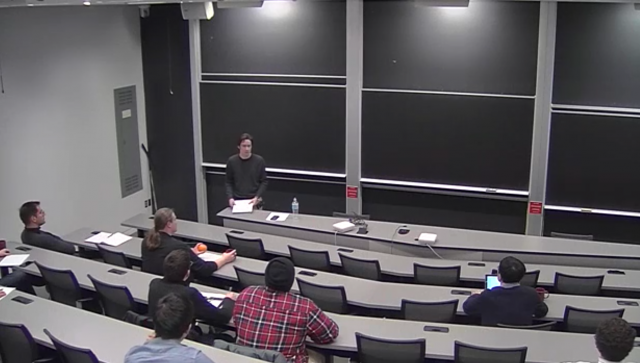
Bulk Locality and Quantum Error Correction in AdS/CFT
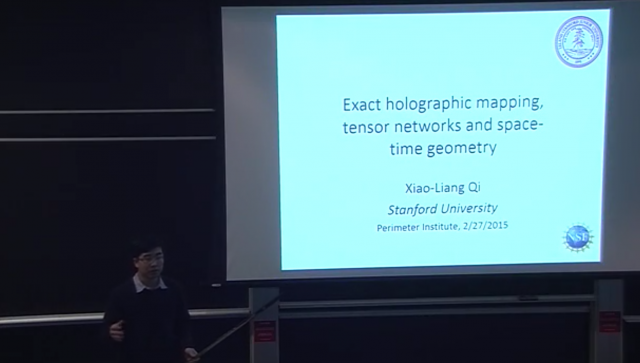
Exact holographic mapping, tensor networks and space-time geometry
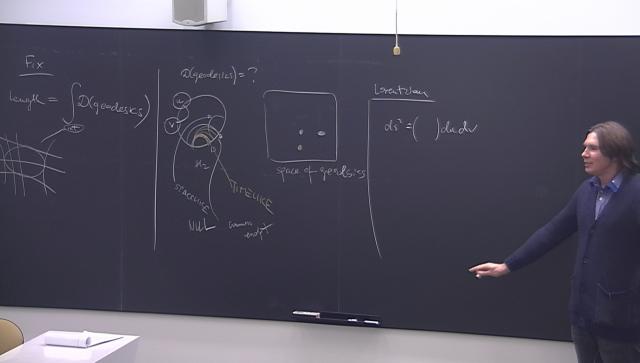
Tensor Networks from Integral Geometry
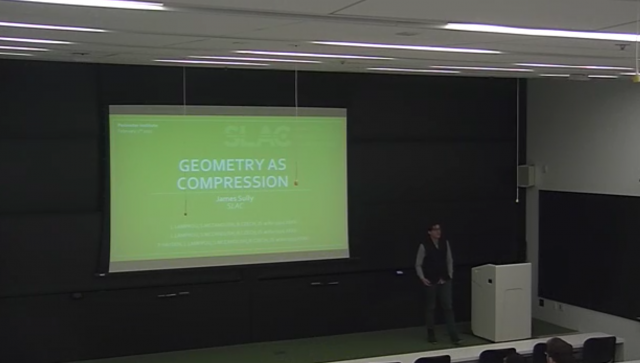
Geometry from Compression
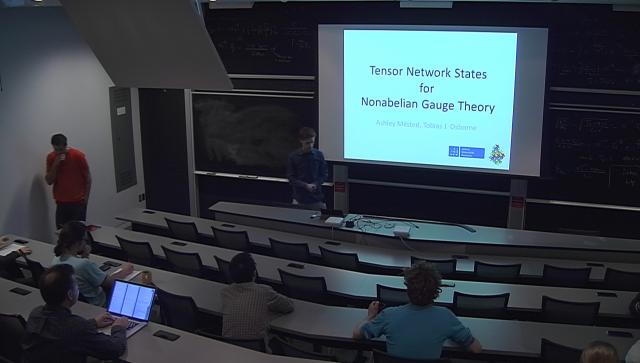
Tensor Networks for nonabelian Gauge Theory
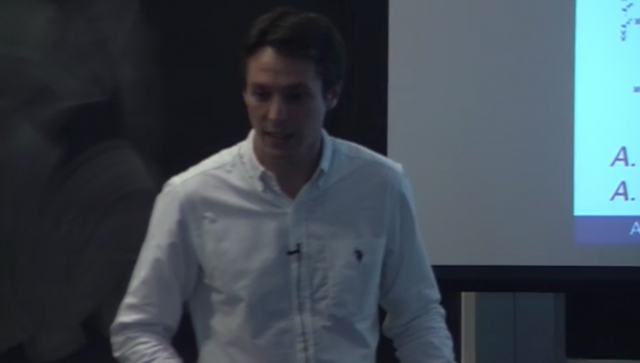
Self-assembling tensor networks and holography in disordered spin chains
